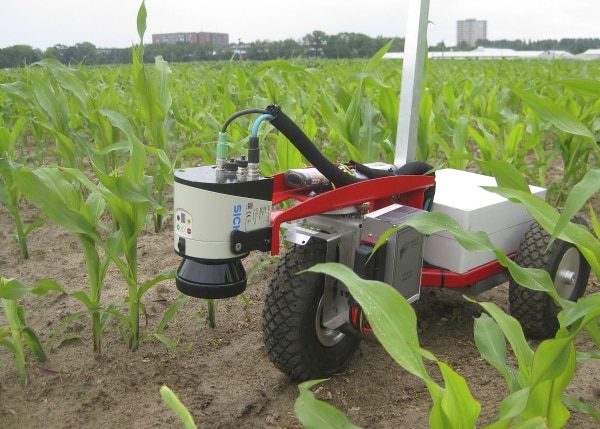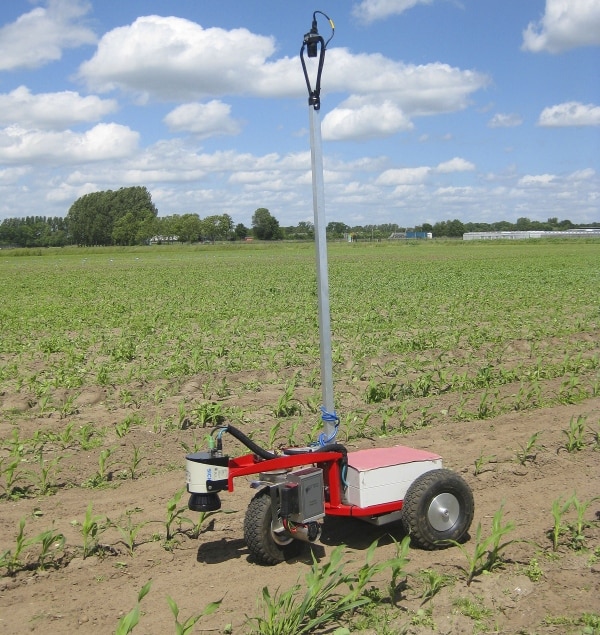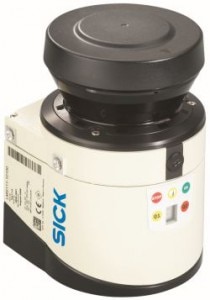How can we harness modern technology in a way that will allow people to collaborate with business even more intelligently, efficiently, and sustainably in the future? SICK has applied 2D laser scanners to crop robots in order to assist a scientific project at Wageningen University and Research Centre.

How do you navigate an agricultural robot through a field? The major challenge of this application is found not only in the wide variety of crops out there, but also in the fact that crop rows are neither completely straight nor all the same width. Now, Wageningen University and Research Centre has developed a solution that uses the LMS111 2D laser scanner. Precision agriculture is on the rise - but what does it mean? It is a practice that marks a move away from the model of subjecting every field to a standard treatment, and instead takes a semi-tailored approach that considers the requirements of each crop. Custom sowing, fertilization, pesticide application, and disease control have the potential to not only save money, but also reduce impact on the environment. That said, the more efficient benefits that precision agriculture brings are unfortunately not yet enough to outweigh the performance of the large, fast farm machinery that saves significant quantities of manpower. Recently, however, a solution to this problem has been introduced in the form of small agricultural robots that are able to work in fields 24 hours a day, slowing down or stopping as the situation demands and operating almost entirely without human input.
 LMS111 2D laser scanners navigate agricultural robots
LMS111 2D laser scanners navigate agricultural robots
Navigation without GPS A good navigation system is one of the fundamental requirements for using an agricultural robot successfully. The system must be able to account for deviations in the shape and size of crops, crooked rows of differing widths, as well as other irregularities. Standard GPS systems are not up to the job - so it was for this reason that Wageningen University and Research Centre developed a navigation process in which robots would be guided not by a GPS function, but instead by an LMS111 2D laser scanner from SICK.
 LMS111 2D laser scanner
LMS111 2D laser scanner
The LMS111 2D laser scanner collects the raw data and then filters the information it needs out of this. A whole range of practical tests were performed during the growing season to check whether the system was functioning as it should - with the results proving that it is indeed a reliable solution for navigating crop areas cultivated using conventional methods. Summing up, Dr. Frits van Evert from Wageningen University and Research Centre states: We have invested a great deal of time and energy in this project. Just recently, our efforts put us in a position to publish our findings in a leading scientific journal. I would therefore like to express my sincere thanks to SICK for providing us with the laser scanner for our research.
- Product informationen: LMS111 2D laser scanner
- Product portfolio: 2D Laser scanners
- Customer information: Wageningen University and Research Centre

